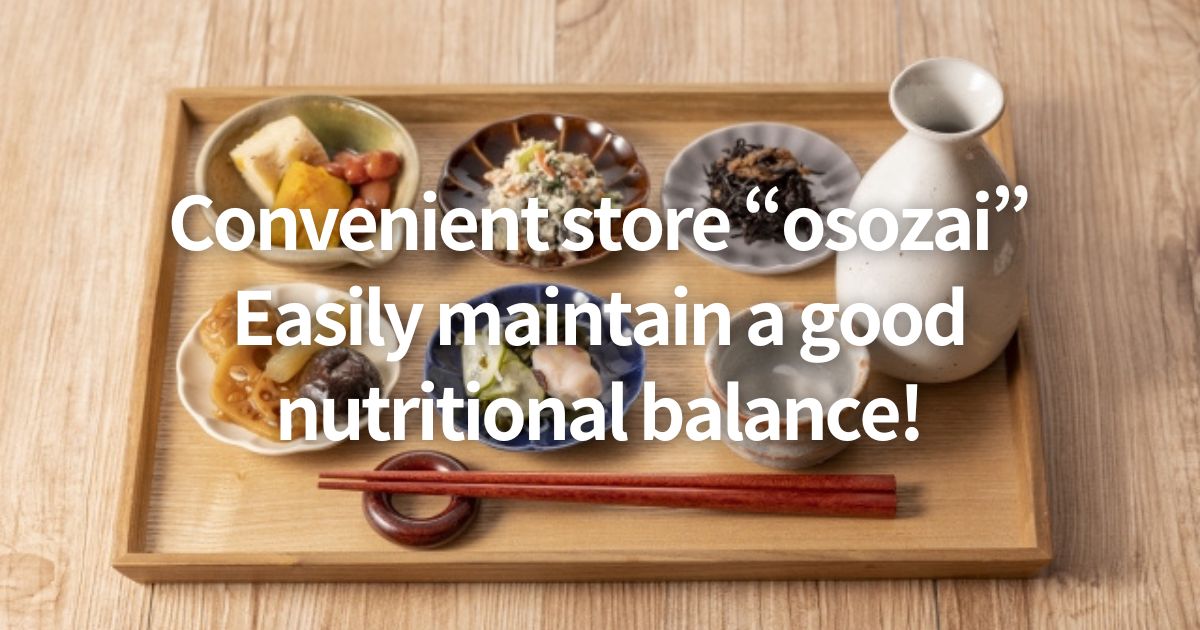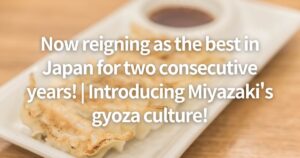In Japan, there has long been a dish called “osozai” (side dishes).
“Osozai” are supposed to be eaten with rice, and the combination of these “osozai” helps to maintain a good nutritional balance.
I love “osozai” because they are an easy way to get vegetables, but living and working alone, it is difficult to take the time to cook them.
The savior in this situation is the “osozai” sold at convenience stores.
Convenience store “osozai” are sold in small portions and in a variety of varieties, so you can freely combine them to enrich your meals.
In this article, I will give an overview of convenience store “osozai”, their appeal points, recommended “osozai”, and ways to enjoy them, including my own experiences.
I hope that this article will spark your interest in convenience store “osozai”.
To review, what are “osozai” ?
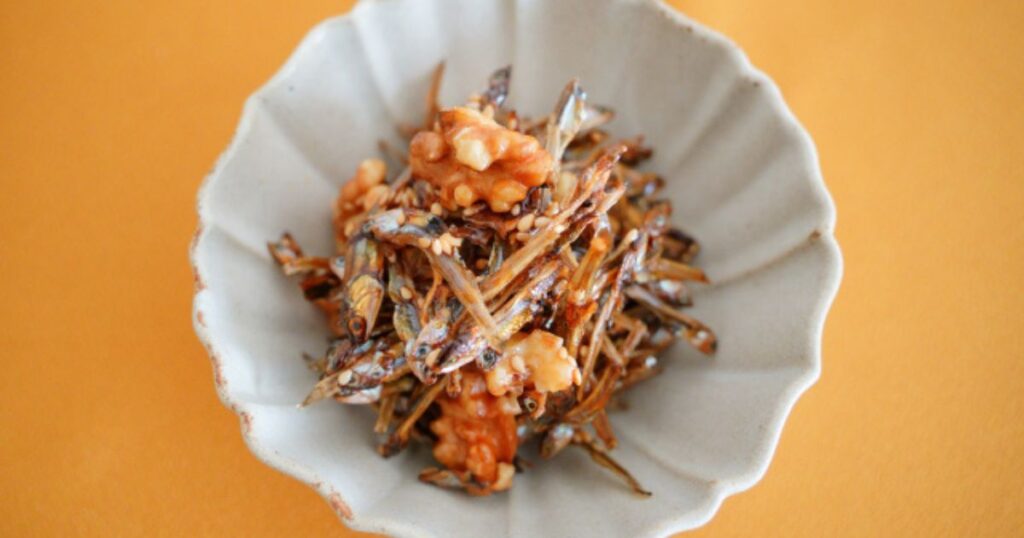

“Osozai” are dishes that are served with the main meal (rice).
Originally, it meant daily side dishes that are homemade at home, but nowadays it also includes commercial side dishes sold at supermarkets and convenience stores, as well as home-delivered side dishes.
Each region has its own special characteristics, and a variety of dishes using local vegetables and seafood exist.
They are an indispensable part of the Japanese dining table and play an important role in supporting the eating habits of busy modern people.
What is the origin and history of “osozai”?
At that time, side dishes for weekday meals were called “sosai” in Edo and “banzai” in the Keihan region.
During the Edo period, a business selling boiled and seasoned dishes called “nimi-sei” also appeared, and this is believed to be the origin of commercially prepared side dishes.
There are many local dishes that make use of the food culture and ingredients of each region, and over time they have evolved from home-style delicacies to commercial products.
Until “osozai” were sold in convenience stores
Convenience stores first appeared in Japan in the 1970s. In the 1980s, they were called “late-night supermarkets” and began selling boxed lunches, rice balls, fried foods, and other items.
In 1979, 7-Eleven strengthened its system for supplying “osozai”, and since then, the company has enhanced its product lineup by using no preservatives and strict quality control.
Today, convenience store “osozai” have diversified and have become a part of Japanese food culture, used by men and women of all ages.
It is true that the development of convenience stores has made it easier for everyone to get hold of these products, and it is understandable that the variety of “osozai” in convenience stores has increased due to their capital power.
Three Attractions of “osozai”


I have summarized some of the attractions of “osozai” that I find appealing.
Easy access to a variety of traditional cuisines
Japanese convenience store “osozai” range from classic Japanese dishes such as meat and potatoes, grilled fish, and oden to Western dishes such as hamburgers and beef stew.
Seven-Eleven’s “Kin Series” and FamilyMart’s “Mom’s Shokudo” in particular are characterized by their ability to reproduce home cooking and allow visitors to experience Japanese food culture in a short time.
The convenience of microwave-safe containers and free chopsticks and spoons are also provided, making it easy for tourists to enjoy the food.
High quality ingredients and professional taste
Convenience store “osozai” are prepared in collaboration with specialty manufacturers and under the supervision of cookery researchers, so that dishes that would take time and effort at home are served at a high quality level.
For example, LAWSON’s fish dishes utilize local ingredients, and FamilyMart’s “charcoal-grilled yakitori” has sold a total of 100 million units.
The company’s cooking methods use fewer preservatives, and its nutritional balance has been improved, making it popular among health-conscious consumers.
Accessibility at any time of the day
With a 24-hour operation and a nationwide chain network, customers can easily purchase food at train stations and in town, even while sightseeing.
Not only does this solve the problem of eating at night or while traveling, but it also offers excellent cost performance, with many items discounted during time sales.
At stores with eat-in space, it is also convenient for foreigners to be able to eat hot immediately after purchase.
Considering the opening hours of convenience stores and the number of stores that are open, being able to eat delicious convenience store “osozai” anytime and anywhere is a high point.
“Osozai” I recommend
Here are some of the popular “osozai” and my recommendations.
My recommendation
FamilyMart “Steamed Chicken and Salted Kelp with Yamitsuki Cabbage
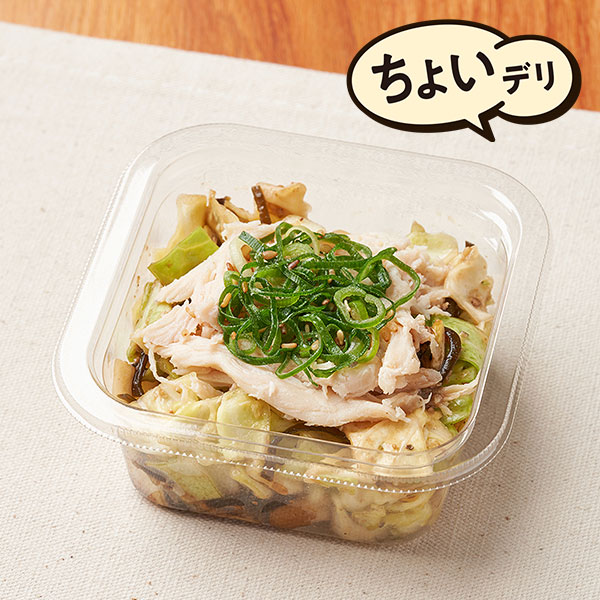

✅ Recommended Points
- FamilyMart’s “Steamed Chicken and Salted Kelp with Yumitsuki Cabbage” is a simple but addictive Japanese “osozai” that combines moist steamed chicken and flavorful salted kelp with cabbage.
- The flavor of sesame oil enhances the whole dish, giving it a refreshing yet full-bodied taste.
- This dish is perfect as a snack or side dish.
LAWSON “3.5g Dietary Fiber Roasted Sesame Flavor Root Vegetable Salad
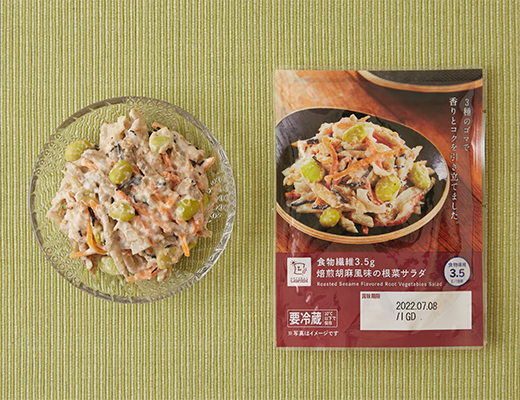

✅ Recommended Points
- LAWSON’s “3.5g Dietary Fiber Roasted Sesame Flavor Root Vegetable Salad” is a healthy Japanese-style salad made with root vegetables such as burdock, lotus root, and carrot.
- The savory roasted sesame dressing gives it a rich flavor and a crunchy texture.
- It is a healthy dish that also provides dietary fiber.
7-Eleven “Grilled Mackerel with Grated Ponzu (Vinegar with Grated Ponzu)”
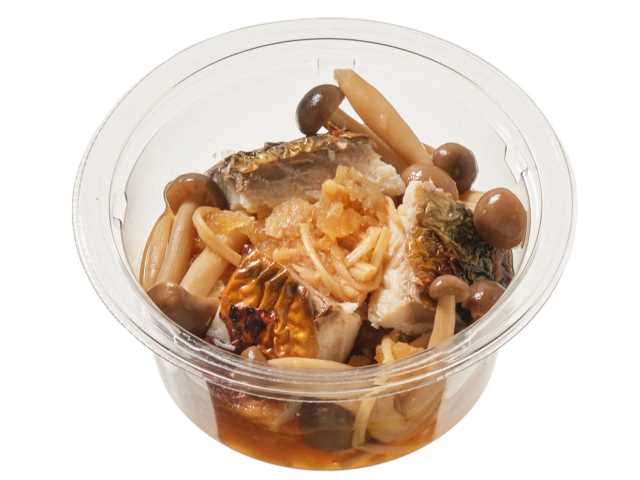

✅ Recommended Points
- Seven-Eleven’s “Open-Heat Grilled Mackerel with Ponzu (grated radish)” is a Japanese “osozai” consisting of fatty mackerel grilled over an open flame to a savory flavor and served with enoki mushrooms, shimeji mushrooms, and other mushrooms, as well as coarsely grated radish, in a light, refreshing vinegar sauce.
- The plump, juicy mackerel and crunchy mushrooms blend perfectly with the fresh citrus flavor.
- As it is boneless and easy to eat, it is ideal as an accompaniment to rice or as a snack.
If you’re not careful, you can end up with a snack-like choice of side dishes…
Area-specific items
FamilyMart “[Tokai/Hokuriku] Hatcho Miso Rich and Umami Doteni
![FamilyMart “[Tokai/Hokuriku] Hatcho Miso Rich and Umami Doteni](https://www.family.co.jp/content/dam/family/goods/2234601.jpg)
![FamilyMart “[Tokai/Hokuriku] Hatcho Miso Rich and Umami Doteni](https://www.family.co.jp/content/dam/family/goods/2234601.jpg)
✅ Recommended Points
- FamilyMart’s “[Tokai & Hokuriku] Hatcho Miso no Rich and Umami Dote-ni” is a chilled “osozai” that makes it easy to enjoy the Nagoya specialty “Dote-ni”.
- Domestic pork intestines are slowly simmered in a rich miso sauce made from Hatcho miso and added with white sugar and white sugar to bring out the deep richness and umami of the dish.
- It is sold at stores in the Tokai and Hokuriku regions (excluding parts of Shizuoka Prefecture).
- It is a perfect accompaniment to rice or as a snack.
LAWSON “Chikuzen-ni (Chikuzen stew with 6 ingredients and Japanese chicken thigh)
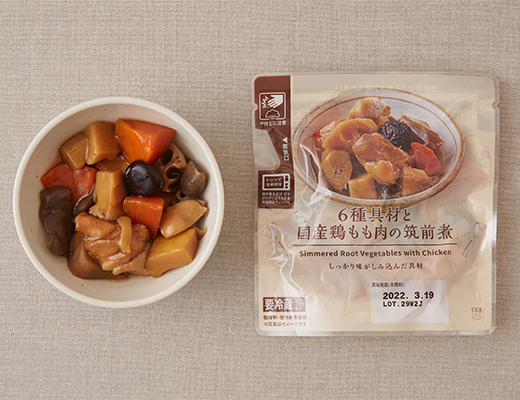

✅ Recommended Points
- LAWSON’s “Chikuzen-ni with 6 Ingredients and Japanese Chicken Thigh” is a side dish that makes it easy to enjoy a traditional Kyushu-style “osozai”.
- The dish is made with Japanese chicken thigh and six kinds of vegetables (burdock root, lotus root, carrot, konnyaku, shiitake mushroom, and bamboo shoot), and is well seasoned.
- This product is recommended for foreign visitors to Japan who can easily enjoy the taste of Japanese home cooking.
7-Eleven “YAMITSUKI Chikuzentai” (stir-fried greens with soybean paste)


✅ Recommended Points
- Seven-Eleven’s “YAMITSUKI Chokusai Stir-Fry” is a simple yet flavorful dish of stir-fried komatsuna greens stir-fried at high temperature for a short time and seasoned with a garlic and chicken broth-based sauce.
- The crispy texture is enjoyable, and the dish is rich in dietary fiber.
- It is sold only in the Hokuriku region and Shizuoka Prefecture.
There are various other status-only convenience store “osozai”, so please look for them in conjunction with this product when you travel to the regions.
Column: Ministop’s “Kashiwa-Meshi” (Kashiwa Rice) is a nostalgic taste


Although it is not a “osozai”, I love and recommend Kashiwa-Meshi from Ministop in addition to other “osozai”.
Kashiwa-meshi is hard to find in Tokyo, so when I see it at Ministop, I can’t help but reach for it.
Kashiwa-meshi is a rice ball with takikomi-gohan (cooked rice) that is a recreation of a local dish from the Kyushu region.
Ingredients such as chicken and burdock root are cooked in the store, and the flavor of the chicken is infused throughout the rice.
The rice balls also taste great even when the rice is cold.
It is nice to find a taste of your hometown unexpectedly at a convenience store. We hope you enjoy it with our convenience store “osozai”.
Three ways to enjoy “osozai” for foreigners visiting Japan


To enjoy “osozai”to its fullest, try these tips:
✅ Experience Japanese food culture with seasonal products
Convenience store “osozai” are characterized by menus that match the four seasons, such as bamboo shoot stew in spring, chilled cucumber kimochi in summer, and salad with chestnut kinton in fall.
Many of the products are also tailored to events, making it an attractive “eating calendar” for foreign visitors to Japan, allowing them to enjoy a sense of Japan’s seasons.
✅ Enjoy local cuisine in a casual manner with limited regional menus
There is a full lineup of products that recreate regional specialties, such as Hokkaido’s Genghis Khan-style “osozai” and Okinawa’s Goya Chanpuru (bitter melon stir-fry).
Seven-Eleven’s “Gotochi Gourmet Series” is particularly popular for its easy way to experience local flavors.
They are attracting attention as a new style of “eating and walking” to try local specialties while traveling.
✅ Share on SNS with Instagram-worthy serving styles
The enjoyment of arranging multiple “osozai” beautifully in a bowl, such as the “ryokan-style serving” that has become a hot topic on Twitter, is gaining popularity among the younger generation.
Salads, simmered dishes, and fried foods can be combined to create a photo-worthy plate while maintaining a good nutritional balance.
Cold “osozai” that do not require microwaving and colorful vegetable dishes are considered particularly suitable for serving.
It is true that convenience store “osozai” are divided into small portions and come in many varieties, so it is easy to arrange them in various ways, which is probably one of the points that make them enjoyable.
You can easily taste “osozai” at home!
These days, “osozai” are readily available at convenience stores, but you can also purchase “osozai” that are sold on a limited basis at a discount on Amazon.
In this article, I would like to introduce some of the “osozai” I recommend that are available on Amazon.
Please take a look at them to help you choose your favorite “osozai”.
If you are interested, check out the following products on Amazon!








Some of these “osozai” can be stored for a long time as emergency rations.

